The History of An Coimisiún Le Rincí Gaelacha
An Stair An Coimisiún Le Rincí Gaelacha
Essie Connolly Dancers, circa 1920s, Cullinane Archive Collection, ITMA
Credit:
Written in collaboration with Dr John Cullinane (TCRG, ADCRG), the Cullinane Archive Collection, and the Irish Traditional Music Archive.
The information below is taken from Dr John Cullinane’s many publications on the history of Irish dance including, “An Coimisiún Le Rincí Gaelacha (Irish Dancing Commission): Its Origins and Evolution” and “Aspects of the History of Irish Dancing Commission Examinations: 70 Years. 1943 – 2013”.
Interested in learning more about the Cullinane Archive Collection? Visit the Irish Traditional Music Archive website to schedule your visit.
Since 1932, An Coimisiún Le Rincí Gaelacha have been the standard bearers for Irish dance across the world through a series of examinations and premiere championship events. While today’s dancers work hard on their choreography, technique, strength and conditioning for the chance to qualify for the Oireachtas Rince na Cruinne, they are continuing to develop this beloved cultural artform that has strong ties to the history of Ireland.
Gaelic League Origins:
In the 19th century, most of Europe used the principles of nationalism to determine their political and cultural identities. After the Act of the Union, which brought Ireland under the rule of the British Empire, many in Ireland were determined to keep their culture alive. This resulted in the formation of the Gaelic League – Conradh na Gaeilge in 1893.
Their initial objectives surrounded the preservation of the Irish language and, by extension, the publication of Irish literature from past and present. While the promotion of dancing and music were not primary objectives, they were aspects of Irish culture that grew in popularity among the different social circle across Ireland. Little did they know at the time, the Gaelic League would become one of the greatest influences in the history of Irish dance.
Prior to the formation of the Gaelic League, formal dancing classes were primarily a feature in rural social life (Cork, Kerry and Limerick). However, dance became increasingly popular and the Gaelic League could not ignore the demand for more classes and structured competitions within the capital city of Dublin and their London branch. As the League organised more competitions – Feisanna and Oireachtaisi – to keep up with the demand, it became apparent that further action would be needed to maintain the standard of Irish dance across the country.
As early as 1930, the League discussed forming a Standing Committee (Comisiun an Rince) of established Irish dance teachers and Conradh na Gaeilge members that would handle the rules, championships events, and registration of all Irish dance teachers and adjudicators in Ireland. In 1931, a three page document covering the “Rules and Regulations” for An Coimisiún was approved by the Gaelic League Easter Congress. Since 1932, CLRG’s first year of activity, the Gaelic League laid the foundations of Irish dance as we know it today by creating a global competition and exam structure.
First Competitions:
At the beginning of the 20th century, the Gaelic League organised concerts and other social events that popularised solo dancing as well as figure dancing. This brought a new awareness to the cultural heritage of Irish dances that helped make competitions a driving force in Irish dancing.
Most feisanna between 1890 to 1930 were organised by the various branches of the Gaelic League. The first Oireachtas (or championships) was organised for the Rotunda in Dublin City in 1897, with the first local feis (or competition) organised by the Macroom branch of the Gaelic League the following year.
While the pictures and medals included here are from the early to mid twentieth century, it is easy to see how competitions have developed into the dazzling spectacles of strength and tradition. Nowadays, CLRG dancers work hard all year round on their choreography, performance skills, and costuming for a chance to compete on an international stage. The Oireachtas Rince na Cruinne and Oireachtas Rince na hÉireann have grown into global events, with over 3000 competitors coming together to showcase their artform on stage.
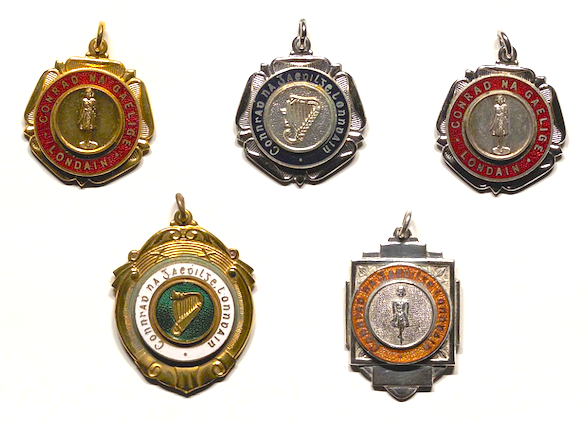
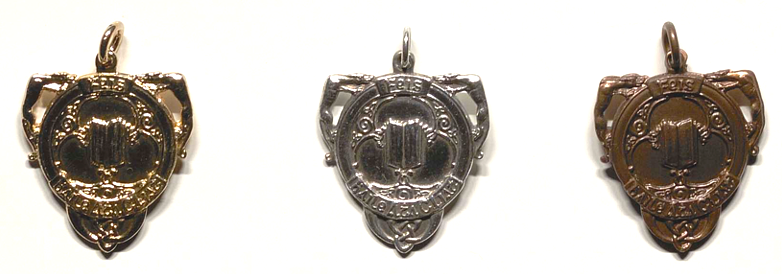
Medals, Feis Atha Cliath (1950-51), Cullinane Archive Collection, ITMA
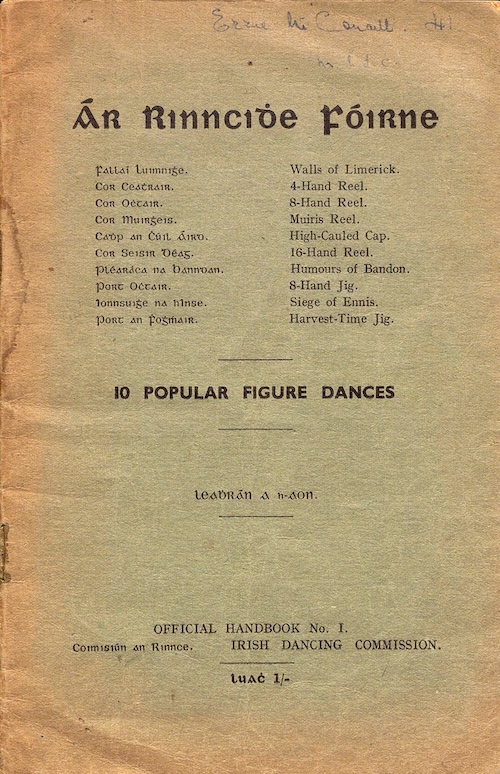
Ár Rince Foirne, 1st Edition, ITMA Collection
Introducing Certification Exams:
While past CLRG members set up the framework for feisanna, championships, and Oireachtaisi, as seen today, they also created a formal examination scheme for new teachers and adjudicators. Up until 1943, there were no structures or guidelines in place that recognised the necessary skills and ability of an Irish dancing teacher. With the introduction of an examination system, CLRG ensured the future of Irish dance.
From studying the different Ar Rinci Foirne (collection of ceili dances), to learning the differences between traditional music, those who undertook a CLRG exam were expected to be experts in all aspects of Irish dance. These days, thousands of candidates present themselves for CLRG exams every year. This sophisticated examination scheme has allowed CLRG to bring Irish dance to global audiences.
Going Global:
Up until 1967, those who lived overseas and wished to become a part of CLRG had to travel to Dublin and take their TCRG or ADCRG examination. The first overseas examination took place in San Francisco, California in 1967 when the President at the time, Cormac Mac Fhionnlaoich, was asked to administer the TCRG exam to local teachers as part of the Irish festival week.
After seeing the appetite for examinations in America, CLRG members started to branch out – exams were held in Australia & England in 1969, New Zealand in 1973 and Canada in 1976. This period of change saw the Commission become a global organisation almost overnight!
Today, the organisation legislates Irish dance in over 20 countries and six continents worldwide. The Overseas Committee continues to develop new, CLRG-registered organisations in countries like South America, South Africa, Europe – even as far away as Asia.
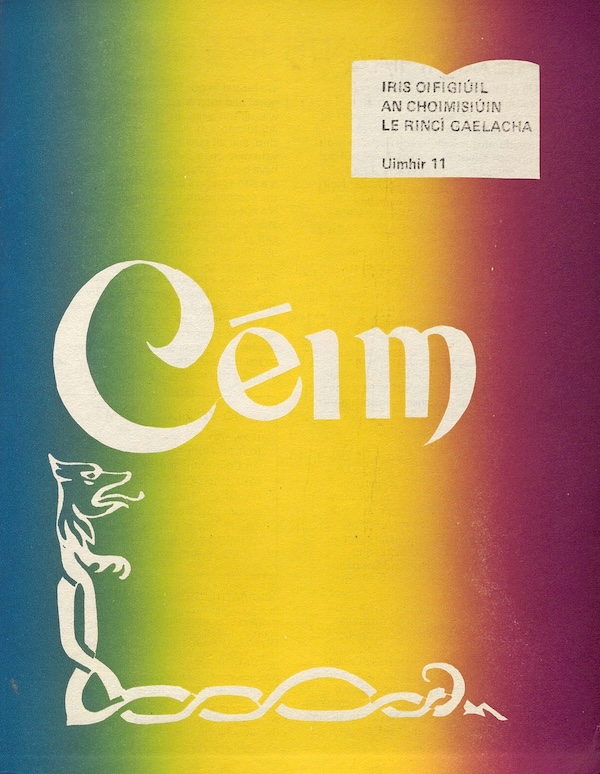
Ceim 11, 1973, ITMA Collection

Ceim 65, February 1989, ITMA Collection
Present Day Mission:
In 2024, An Coimisiún Le Rincí Gaelacha is the main governing body for Irish dance worldwide, still under the patronage of Conradh na Gaelige. The set of regional councils and collective bodies registered to CLRG are responsible for conducting grade examinations, feisanna, and championship events within their respective region. CLRG still conducts teacher and adjudicator examinations across the globe and maintains an annual list of qualified registrants, of which there are close to 2,000!
CLRG dancers are some of the best in the world who have gone on to have incredible careers in shows like Riverdance or Lord of the Dance, or gone on to become teachers themselves, taking their dances to the same competitions they did growing up. We are grateful for the CLRG Irish dance community that continues to develop this cultural art form and bring it to new heights.
Going forward, An Coimisiún Le Rincí Gaelacha will continue to fulfill our mandate of promoting and preserving Irish dance by supporting the incredible teachers, adjudicators, and dancers who seek to share their passion with their local communities in new and exciting initiatives.
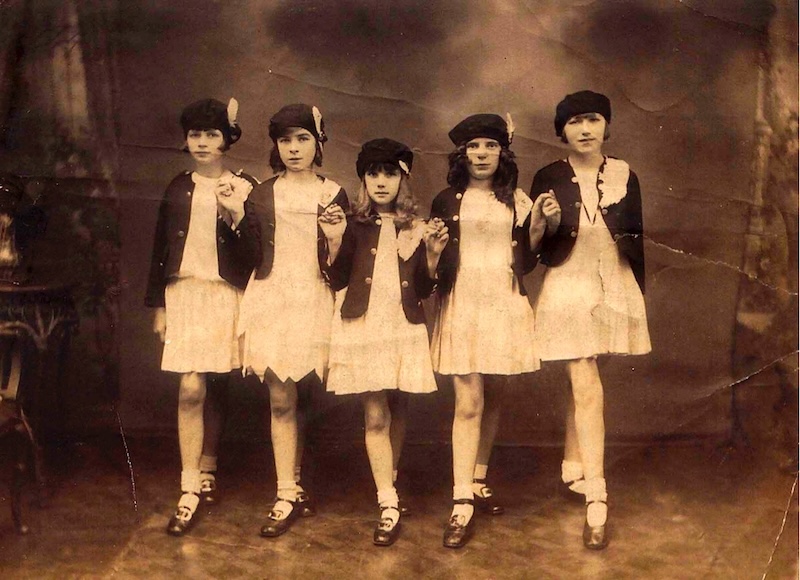
Essie Connolly Dancers, circa 1920(s), Cullinane Archive Collection, ITMA
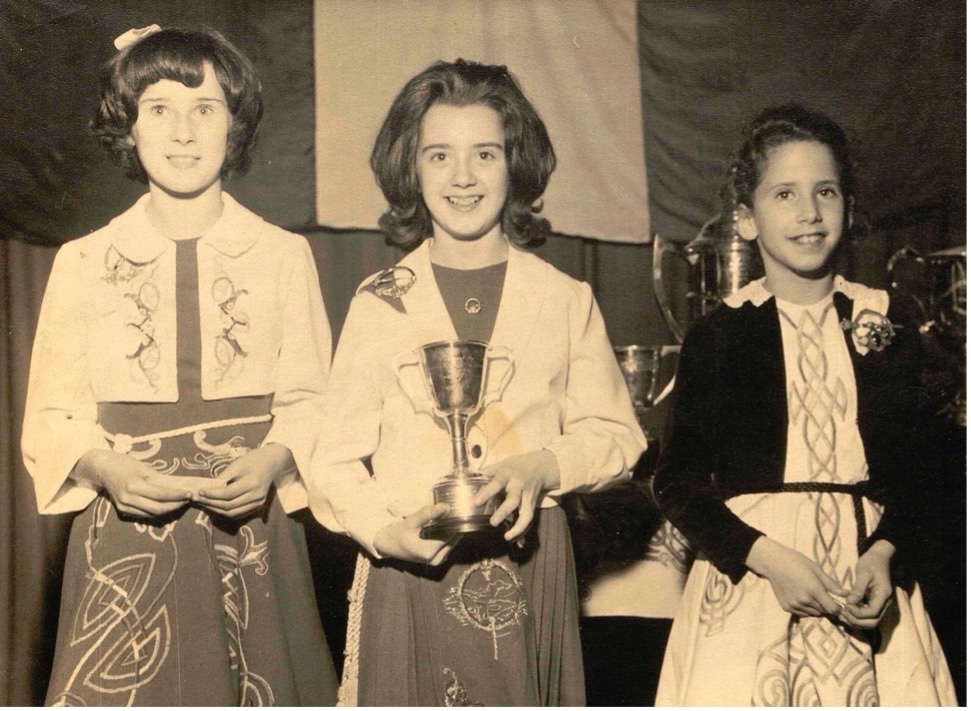
London dancers at the Great Britian Championships 1965, Cullinane Archive Collection, ITMA

Lily Comerford Dancers, 1932, Cullinane Archive Collection, ITMA

Essie Connolly Dancers, Cullinane Archive Collection, ITMA
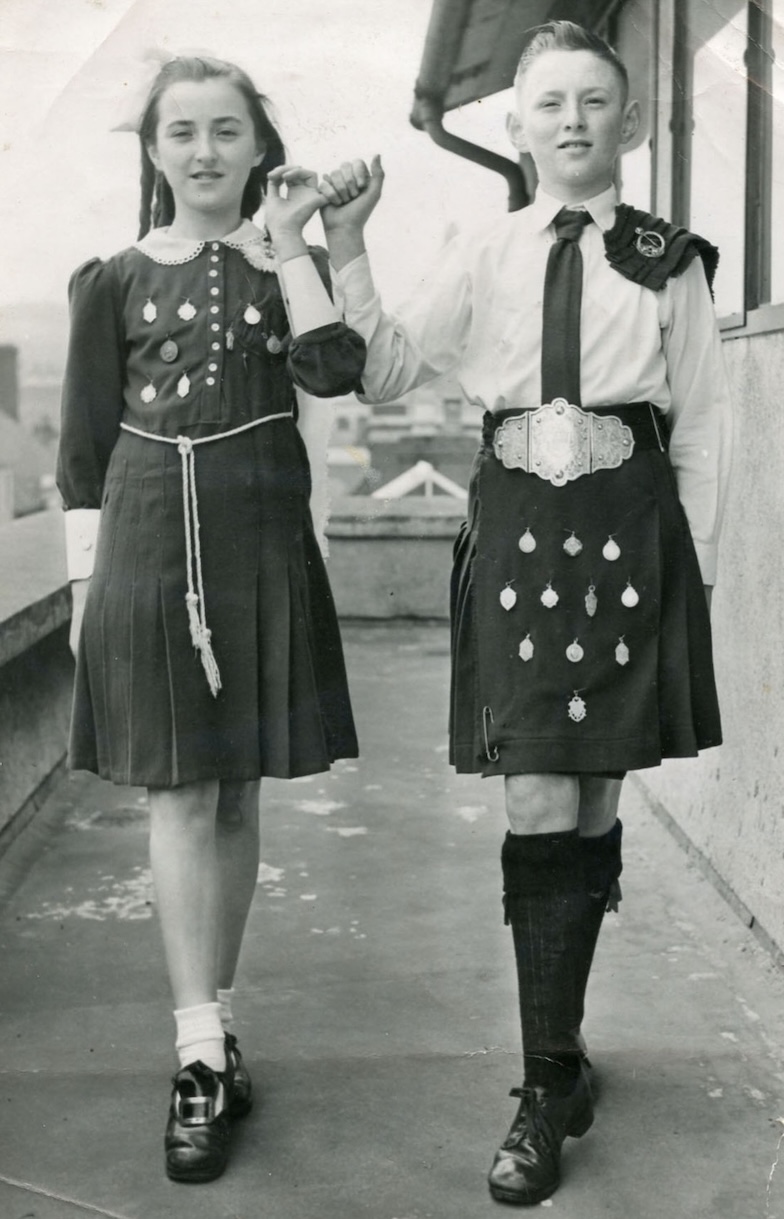
Ciss & John Cullinane, 1952, Cullinane Archive Collection, ITMA